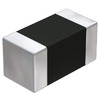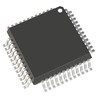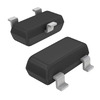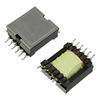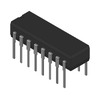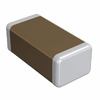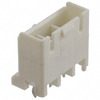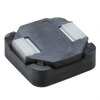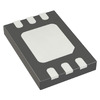HomeBlogLM358 vs. LM393: Learn about the LM358 op amp and the differences between op amps and comparators
LM358 vs. LM393: Learn about the LM358 op amp and the differences between op amps and comparators
Overview of LM358 Operational Amplifier

The LM358 is a low power dual operational amplifier consisting of two independent high gain internal frequency compensated operational amplifiers. It is designed for single-supply operation over a wide voltage range. In addition, it features low power consumption, an extended common-mode input voltage range to ground/VEE, and single- or dual-supply operation.
Catalog
It offers several distinct advantages over standard op amp types used in single-supply applications. The amplifier can operate from supply voltages as low as 3.0 V or as high as 32 V. The amplifier can be operated from a single supply. Its common-mode input range includes negative supplies, so it eliminates the need for external bias components in many applications. The LM358 is available in an SOP-8 package and is widely used in industrial control, audio amplifiers, DC gain, and all conventional operational amplifier circuits.
Replacements and Equivalents
• CA258
• LM358A
• LM358E
• LM358P
• LM358W
Features of LM358 Operational Amplifier
• Its lower input bias current and bias voltage help improve performance and accuracy.
• The LM358 has a high input impedance, making it less susceptible to external signal sources.
• LM358 can operate on a single power supply, which is very convenient for some portable devices and battery-powered applications. Not only does this reduce its power requirements, it reduces the cost and complexity of the device.
• The LM358 is a low-power operational amplifier suitable for battery-powered applications requiring long-term operation.
• The input of the LM358 allows a wide common-mode voltage range, making it ideal for applications that need to handle signals of different levels.
• It integrates two independent operational amplifiers, which makes it suitable for a variety of applications such as amplification, filtering, and comparison.
Symbol, Footprint, and Pin Configuration of LM358
The symbol, footprint, and pin configuration of LM358 are shown below.

LM358 has eight pins, with the output, inverting input, and non-inverting input arranged from top to bottom on the left side. The fourth pin serves as the negative power supply in dual power supply mode and as the ground power supply in single power supply mode. On the right side, the four pins include the non-inverting input terminal, inverting input terminal, output terminal, and positive power supply, arranged from bottom to top.
Internal Structure of LM358 Chip
The internal structure of the LM358 chip includes an output stage, a common mode input stage, a differential mode input stage, two operational amplifiers, etc.
Output stage: It consists of an output stage amplifier and a common pole amplifier, which can achieve voltage amplification and output drive.
Common mode input stage: It consists of a differential amplifier and an operational amplifier to achieve common mode input.
Differential mode input stage: The differential mode input stage consists of a differential amplifier and a common pole amplifier, which can realize differential input.
Operational amplifier: Both operational amplifiers have the same internal structure, each amplifier contains an output stage, a differential mode input stage, and a common mode input stage.
Working Principle of LM358 Operational Amplifier
LM358 is a dual op amp integrated circuit consisting of a differential amplifier and a single-ended amplifier for voltage following function. In a differential amplifier, a differential input circuit is formed between the non-inverting input (IN+) and the inverting input (IN-). When the voltage of IN+ is higher than IN-, the output is positive; when the voltage of IN+ is lower than IN-, the output is negative. Therefore, the LM358 is particularly suitable for comparison circuits.
In a single-ended amplifier, it amplifies the input signal to a level similar to the supply voltage and outputs it. At the same time, it makes the output signal follow the supply voltage, which means it can be used in control circuits.
What Is the Difference Between LM393 and LM358?
LM393 is a dual voltage comparator and LM358 is a dual operational amplifier. They differ in the following aspects.
LM393 is a dual voltage comparator used to compare two input signals and output a corresponding high or low level. The LM358 is a dual operational amplifier. An operational amplifier is a circuit commonly used to amplify input signals. Unlike a comparator, the output of an op amp can vary continuously over a wide range and is not limited to high or low levels.
The op amp output stage generally uses a push-pull circuit to achieve bipolar output. However, most comparator output stages use an open-collector structure to achieve unipolar output.
The LM393 comparator has a fast flipping speed, approximately on the order of ns. The flipping speed of LM358 operational amplifiers is generally on the order of us (except for special high-speed operational amplifiers).
The op amp can be connected to a negative feedback circuit, but the comparator cannot use negative feedback. Although the comparator also has two input terminals, non-inverting and inverting, there is no phase compensation circuit inside, so if negative feedback is connected, the circuit may not work stably. It has no phase compensation circuit inside, which is why the comparator is faster than the op amp.
How to Use the LM358 Chip?
First, we need to connect the chip to the circuit correctly. Typically, the LM358 chip has 8 pins, including the non-inverting and inverting input pins of the two operational amplifiers, as well as the output and power supply pins. Before connecting the chip to the circuit, we should carefully read the chip's data sheet to understand the function of each pin and the correct wiring method. In addition, we should also pay attention to the power supply voltage and operating temperature range required by the chip to ensure its normal operation.
What Are the Applications of LM358 Operational Amplifier?
• Audio amplification: LM358 chip can be used for audio amplification. For example, in a sound system, it amplifies weak audio signals to a sufficient level to make the sound from the speakers clearer.
• Feedback control systems: LM358 can be used to form feedback control loops. It achieves precise control of system parameters by measuring the output signal and comparing it with a reference signal. It is usually used in fields such as automatic control systems, regulated power supplies, and motor drives.
• Voltage comparator: LM358 has a dual op-amp structure, one of which can be used as a voltage comparator. By setting the threshold voltage, it can implement functions such as voltage comparison, switch control, and trigger.
• Sensor interface: The LM358 can be used as a signal amplifier for sensor interface circuits to amplify weak sensor signals to a suitable range for subsequent data processing and analysis. It is used in a wide range of application scenarios, including pressure sensors, light sensors, and temperature sensors.
• Voltage following: It can also be used in voltage following circuits. It implements functions such as tracking and controlling voltage changes by amplifying the input voltage and outputting the corresponding voltage signal.
• Signal processing: LM358 can be used as a key component in analog signal processing circuits to amplify, filter, and enhance input signals. For example, we use LM358 for audio amplification to obtain clear sound quality.
Frequently Asked Questions [FAQ]
1. What is LM358 sensor?
In electronics, this sensor is analogous to human's visionary senses which can be used to detect an obstacle which is one of its common applications. In robotics, a group of such modules are used so that a robot can follow a line pattern. This circuit is made using the following: 1. LM358 IC.
2. What is LM358 used for?
LM358 can be used as transducer amplifier, DC gain block etc. It has large dc voltage gain of 100dB. This IC can be operated on wide range of power supply from 3V to 32V for single power supply or from ±1.5V to ±16V for dual power supply and it also support large output voltage swing.
3. Is LM358 a good op-amp?
There are much better opamps available for sensible prices, and for the most part there's no good reason to use an LM358 in any audio circuit. However, this opamp has some useful characteristics, and it's very low power, which may well be just what you need.
4. What are the advantages of LM358?
These amplifiers have several distinct advantages over standard operational amplifier types in single supply applications. They can operate at supply voltages as low as 3.0 V or as high as 32 V, with quiescent currents about one−fifth of those associated with the MC1741 (on a per amplifier basis).
5. What is LM358 in Arduino?
LM358 is a type of operational amplifier. It consists of two independent, high-gain, frequency-compensated operational amplifiers designed to operate from a single supply over a wide range of voltages.
About us
ALLELCO LIMITED
Read more
Quick inquiry
Please send an inquiry, we will respond immediately.
→ Previous
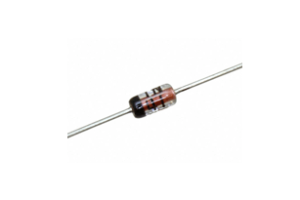
Overview of 1N4148 1N4148 is a small, high-speed switching diode with rapid switching speed, so it is widely used in circuits with high signal frequency for single-lead isolation, such as computer boards, communications, television circuits and industrial control circuits. It is available in DO35, L...

The 2N3904 is a commonly used transistor that is widely used in electronic circuits for a variety of applications. To make better use of it, in this article, we will explore the physical structure of the 2N3904 transistor, learn about its replacement models, features, technical parameters and pin co...
→ Next

An In-Depth Look at the 1N4148 Diode for Industrial and Communication Uses
on April 29th

Harnessing the Power of the 2N3904 Transistor for Effective Circuit Design
on April 29th
Popular Posts
-

What is GND in the circuit?
on January 1th 2937
-

RJ-45 Connector Guide: RJ-45 Connector Color Codes, Wiring Schemes, R-J45 Applications, RJ-45 Datasheets
on January 1th 2497
-

Fiber Connector Types: SC Vs LC And LC Vs MTP
on January 1th 2088
-

Understanding Power Supply Voltages in Electronics VCC, VDD, VEE, VSS, and GND
on November 9th 1886
-

Comparison Between DB9 and RS232
on January 1th 1759
-

What Is An LR44 Battery?
Electricity, that ubiquitous force, quietly permeates every aspect of our daily lives, from trivial gadgets to life-threatening medical equipment, it plays a silent role. However, truly grasping this energy, especially how to store and efficiently output it, is no easy task. It is against this background that this article will focus on a type of coin cell battery that may seem insignificant on the...on January 1th 1712
-

Understanding the Fundamentals:Inductance Resistance, andCapacitance
In the intricate dance of electrical engineering, a trio of fundamental elements takes center stage: inductance, resistance, and capacitance. Each bears unique traits that dictate the dynamic rhythms of electronic circuits. Here, we embark on a journey to decipher the complexities of these components, to uncover their distinct roles and practical uses within the vast electrical orchestra. Inductan...on January 1th 1651
-

CR2430 Battery Comprehensive Guide: Specifications, Applications and Comparison to CR2032 Batteries
What is CR2430 battery ?Benefits of CR2430 BatteriesNormCR2430 Battery ApplicationsCR2430 EquivalentCR2430 VS CR2032Battery CR2430 SizeWhat to look for when buying the CR2430 and equivalentsData Sheet PDFFrequently Asked Questions Batteries are the heart of small electronic devices. Among the many types available, coin cells play a crucial role, commonly found in calculators, remote controls, and ...on January 1th 1541
-

What Is RF and Why Do We Use It?
Radio Frequency (RF) technology is a key part of modern wireless communication, enabling data transmission over long distances without physical connections. This article delves into the basics of RF, explaining how electromagnetic radiation (EMR) makes RF communication possible. We will explore the principles of EMR, the creation and control of RF signals, and their wide-ranging uses. The article ...on January 1th 1537
-

CR2450 vs CR2032: Can The Battery Be Used Instead?
Lithium manganese batteries do have some similarities with other lithium batteries. High energy density and long service life are the characteristics they have in common. This kind of battery has won the trust and favor of many consumers because of its unique safety. Expensive tech gadgets? Small appliances in our homes? Look around and you'll see them everywhere. Among these many lithium-manganes...on January 1th 1504
